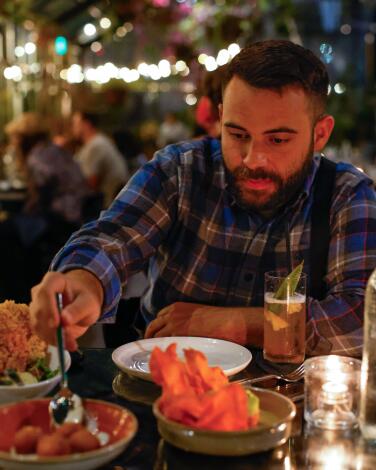This must be Koreatown
- Share via
My first impression of Koreatown wasn’t a great one.
In 2006, a family friend picked me up at LAX. I was 11, and all I could think about was how I had said goodbye to my relatives in Seoul just hours earlier. As soon as I got in the car, I started crying. As we drove off the 10 Freeway and onto Vermont Boulevard, I looked out the window.
Get to know Los Angeles through the places that bring it to life. From restaurants to shops to outdoor spaces, here’s what to discover now.
“This place looks like Seoul in the 1970s,” I blurted out.
Any illusion I had of the United States — the glitz of Hollywood and the palm tree-lined beaches — vanished in that moment. In Koreatown, high-rise buildings — which defined Seoul — were few and far between. Signs had distinctly outdated and tacky fonts. The jimjilbang (Korean bathhouse) I went to was old and lacked the amenities that seemed standard back in Korea.
But over the 17 years I’ve called Southern California home, Koreatown has grown on me, even when I’ve cursed out the place in an everlasting struggle to find parking.
Koreatown’s food scene has become one of the most exciting in the region — and perhaps the country. There are now so many things to do, from singing with friends at a noraebang (a private karaoke room) to getting soju and makgeolli (Korean rice wine) at clubs to, yes, sweating profusely at a clean, modern jimjilbang. Even with an onslaught of high-rises and new apartment complexes that are redefining Koreatown for better or for worse, the neighborhood has managed to keep many of its quirks and charms.
As a reporter covering Asian American communities, I’ve also grown to appreciate the neighborhood’s story, which has been shaped by such pioneers as Hi Duk Lee, who laid the groundwork for his vision of Koreatown when he opened Olympic Market in 1971, and James An, who leads the Korean American Federation of Los Angeles advocacy group after growing up in the shadow of the 1992 L.A. riots.
Today, the gems of the neighborhood — loosely bordered by Vermont and Western boulevards east to west and Beverly and Olympic boulevards north to south — span many cultures. Oaxacan restaurant Guelaguetza on Olympic Boulevard is an L.A. institution, and the array of shops and restaurants that dot 3rd Street’s Little Bangladesh have helped immigrants renew their lives since the 1960s.
As with any neighborhood, Koreatown has its challenges. Rising rents are pushing out those who have lived here for decades. Many mom-and-pop businesses struggle to survive. Despite many efforts, the neighborhood lacks park spaces and landmarks that could help elevate Koreatown beyond a place for great food and nightlife.
I’ve recently wondered if it’s time for me to move away from Koreatown (I technically live just outside Koreatown, but it’s close enough). But then, every time I get lost in one of the nearly dozen Korean supermarkets or slurp nangmyeon (Korean cold noodles) at Yuchun or catch the latest Korean blockbuster movies at CGV Cinemas, that thought evaporates.
No, Koreatown doesn’t feel exactly like Seoul. But it does feel like home. — Jeong Park
Love where you live? Tell us which neighborhood we should feature next.
What's included in this guide
Anyone who’s lived in a major metropolis can tell you that neighborhoods are a tricky thing. They’re eternally malleable and evoke sociological questions around how we place our homes, our neighbors and our communities within a wider tapestry. In the name of neighborly generosity, we may include gems that linger outside of technical parameters. Instead of leaning into stark definitions, we hope to celebrate all of the places that make us love where we live.
Our journalists independently visited every spot recommended in this guide. We do not accept free meals or experiences. What L.A. neighborhood should we check out next? Send ideas to guides@latimes.com.

Cure your hangover with Sun Nong Dan's breakfast special
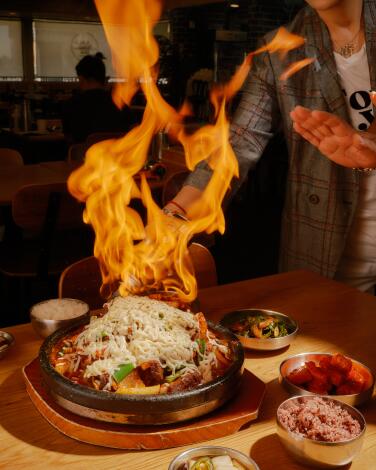
Instead, get there before 10:30 a.m., when you can cure your hangover with the restaurant’s killer morning special, which includes sulung tang, or beef soup, and yuk gae jang, or spicy beef and leek soup. As of October, it’s a steal at $11.99.
The special admittedly lacks the pizzazz that comes with galbi jjim — the soup is served in a modest but sizzling stone pot and comes with rice and three types of kimchi. But a spicy yuk gae jang can get your face sweating and your nostrils running nearly instantly. It’s a great way to clear your mind.
One perk of coming in the morning? Virtually no line. And if you do really want to get your galbi jjim, you can do that too. I saw a family of four chomping at it at 9:40 in the morning. Nothing but respect.
Relax with Korean coffee at the Heyri Cafe & Bar patio
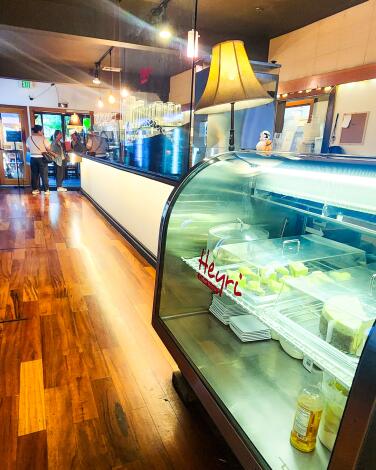
The place has a homey vibe because it’s in a century-old house that was converted into a cafe in 2007. The courtyard features a fountain, canopies and trees strung with lights. There are small, round tables under umbrellas for solo visitors, as well as longer dining tables (including one with a rectangular stone fire pit in the middle) that can accommodate larger meet-ups or happy hour gatherings.
Shop, eat and wander around Madang Courtyard
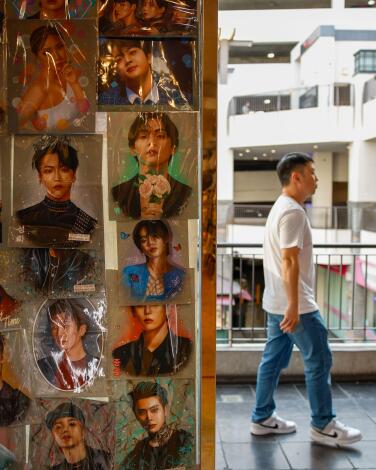
From the ground level, you can look up and see three stories of shopping and entertainment activities. Businesses include Kpop Music Town (which sells albums, fans, light sticks, message cards, pillows and other memorabilia), Aladdin Used Books (the first L.A. branch of a popular Korean chain) and CGV Cinemas (a theater where you can see not only the latest Hollywood movies but also the latest Korean blockbusters with English subtitles).
The mall, though, is actually four stories. On the basement level is an H-Mart, and there are other browse-worthy convenience stores like Daiso and Cosmetic World. Multigenerational crowds hang out here on the weekends, surrounded by a variety of eats — from street snacks (Kost.eat) to Korean barbecue (Jeong Yuk Jeom) to shaved ice (Sul & Beans).
Cool down with icy cold naengmyun at Yuchun
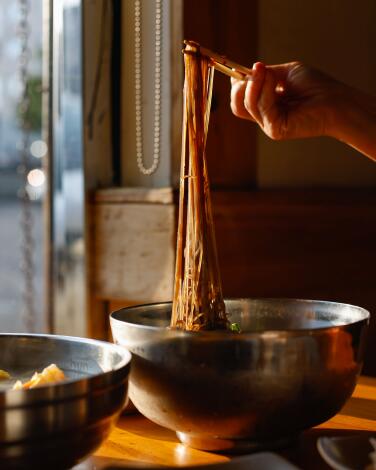
On hot summer days, its mul naengmyun can cool you down in an instant as you chow down on springy noodle, crunchy sliced cucumber and slurp icy cold broth. But any time is a good time for a visit. If you want your noodles a little spicy, get the soupless bibim naengmyun. The restaurant also has solid galbi (Korean short ribs) and mandu (Korean dumplings).
For me, though, the restaurant’s signature menu is its piping hot, self-serve broth you can pour straight out of a dispenser for free. I get self-conscious after getting up to serve myself three or four cups during a meal, but it’s so packed with umami that I can’t help myself.
Get lost in an array of moles at Guelaguetza
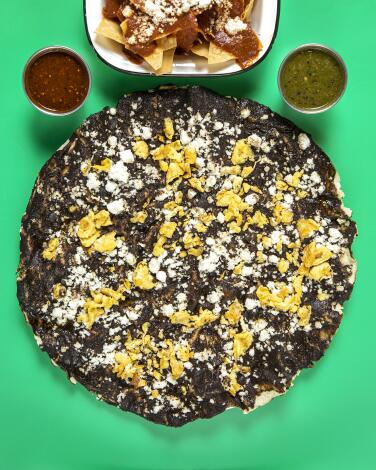
I often gravitate toward mole negro, with its smoky, bold flavor and tender pieces of chicken. But really, you can’t go wrong with any of the moles. On a recent visit, we got ourselves the Festival de Moles, which comes with four individual servings of different moles and is a solid choice if you’re dining there for the first time.
I prefer to go to Guelaguetza for a quiet solo lunch. But if you’re with a group of friends, dinner time is your best option, when you can experience live music and indulge in people-watching as well as botana oaxaqueña, a platter of Oaxacan meats served on a stone plate.
Appreciate the art of afternoon tea at Ye Stage & Tea
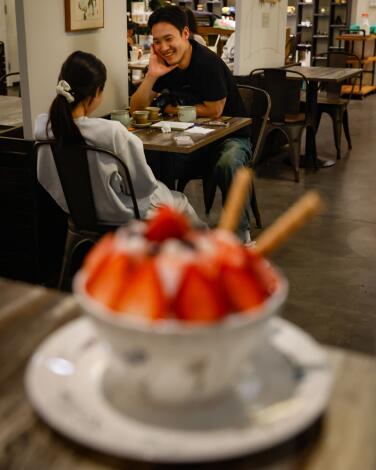
Popular items include the barley grass, mugwort and ssanghwa — teas known not just for their taste but also for their health benefits. You can have your tea with cookies, fresh hodu gwaja (walnut pastries), boong-o bbang (taiyaki), croiffles (croissant waffle) or a rice waffle (a translucent white waffle). The interior seating area is spacious, and there’s also a stage with a piano. The cafe doubles as a venue for local artists to rent. Past events have included musical acts, poetry readings and painting exhibits.
Go virtual golfing at W Screen Golf
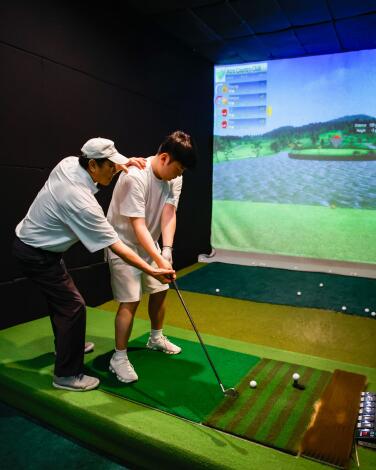
You can pay by the hour for 18 holes of virtual golf or sign up for membership package deals. There are many open stations, but you can also opt for one of the private rooms. The friendly owner offers beginners advice, but golf lessons are also available and recommended. While you’re learning, you can rent clubs for $10. (The City Golf, which is a mile southwest, is Koreatown’s bigger indoor golfing range, but there you’ll have to bring your own clubs.)
Sweat and shiver at Wi Spa
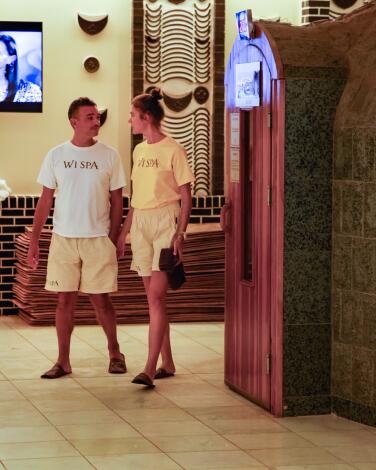
For just $30, you can spend nearly an entire day here, whether you’re working out a sweat in a fitness center or in a steam sauna. My favorite room is a large, darkened rest area where you can stretch your legs on massage chairs ($1, cash only, gets you three minutes of rumbling and rolling on your back and shoulders). You can also indulge in various services, including a Korean body scrub for $60.
The co-ed area, which has five rooms ranging from the 210-degree bulgama to the 53-degree ice sauna, is also worth spending time in. There’s even a little computer area where kids can play Roblox and a cafeteria that serves all kinds of Korean food. Go for a cup of sikhye, or sweet rice punch, and hard boiled eggs straight out of a rice cooker. You won’t regret it.
Bowl and people watch at Shatto 39 Lanes

In addition to the bowling, there’s a bar, coffee shop, arcade games and a billiard room. The coffee shop serves all the greasy food you associate with a fun night on the lanes: burgers, nachos, grilled cheese sandwiches, mozzarella sticks, fries and more. While you’re waiting for your order, you can sit on a bar stool and play games on the Megatouch RX countertop screens.
Go for a run and make friends at the Koreatown Run Club
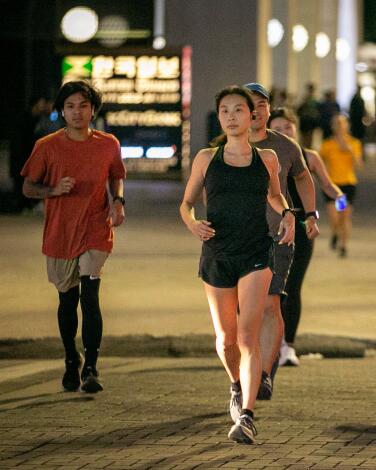
On Mondays at 7 p.m., the club meets at the corner of Wilshire Boulevard and Oxford Avenue in Wilshire Colonnade, one of the most stylish-looking plazas in L.A. (A K-pop video was filmed there.) When I went for a run, the crowd raced north on Western Boulevard, turning back around Melrose Avenue for a three-mile run. (Some run past the 101 Freeway for a five-mile trek.) How fast you run doesn’t really matter— the club welcomes people of all levels of experience.
The club also hosts runs on Thursdays at the Love Hour burger joint on Western as well as on Wednesdays and Saturdays. Check its Instagram page for schedule.
Get some local grub in the markets of Little Bangladesh
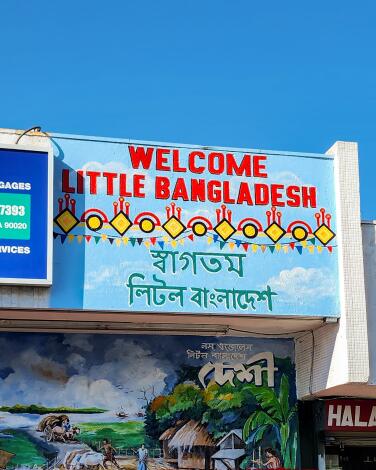
Check out the Bangladeshi markets and eateries, including Deshi Restaurant and Groceries (marked on this map), Bangla Bazar and Restaurant and Biriyani Kabob House. Though Aladin Sweets & Market is not quite within this four-block stretch, it’s nearby and known as the first solely Bengali restaurant in L.A. Opened in 1993, it was unique because many Bengali restaurants had previously advertised their food as broadly South Asian in order to attract customers more familiar with Indian or Pakistani food. The establishment of Little Bangladesh was a movement to celebrate the unique culture.
Hang out at the wildest KFC building in L.A.
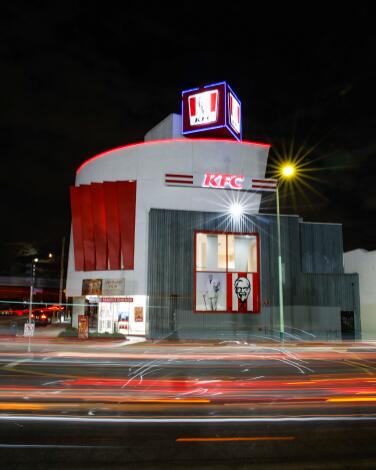
To really appreciate this mesmerizing work of art, you must go inside and get yourself up onto the second floor, which feels like the headquarters for a fried chicken superhero. The space is filled with posters of Colonel Sanders (A “Colonel 101” notes Sanders’ “snack pocket for secret chicken”). A table there even has a floating bucket overhead. Big glass windows and a balcony allow for plenty of people watching as well.
Yes, experiencing all this means you’ll have to order some KFC. But honestly, who cares? The building makes it worth it.
Eat alongside K-pop stars and celebrities at Ahgassi Gopchang
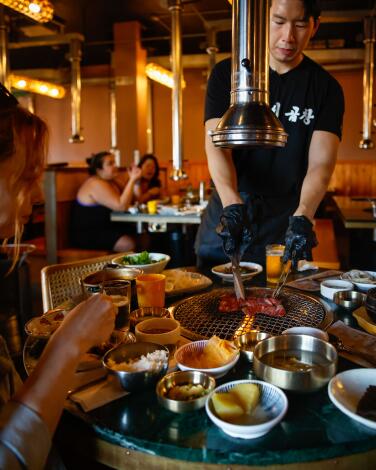
Beef intestine, or gopchang, is one of the most unusual Korean barbecue dishes you can get. I prefer to leave it on the grill longer to get it crispy, although chewy versions are good too. The meat comes with an array of banchan and side dishes, including steamed egg, rice cake, mushroom, onion and potato. The meal ends with an unofficial Korean dessert: fried rice with seaweed flakes and intestine bits.
The members of BTS have eaten there (“You don’t know Ahgassi Gopchang?” Jin asked at a radio appearance years ago), and so have many other K-pop celebrities (as evidenced by the wall full of autographs). But the restaurant is great in its own right too. Can’t stomach the intestines? The place also serves more traditional Korean barbecue dishes such as brisket and short rib.
Slurp up raw crab at Crab House
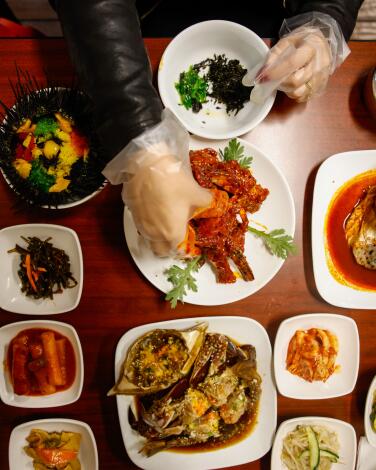
Ganjang-gejang refers to the crab marinated in soy sauce, and yangnyeom-gejang is doused in a spicy chile sauce. Other dishes at Crab House include the uni bowl (a mix of fresh uni, rice, seaweed, roe, pickled veggies and quail egg in a spiky black sea urchin shell) and seafood stews. There are multiple Korean raw crab restaurants in the neighborhood for those who want to sample, but Blackpink fans might want to know that Crab House is the one that hosted Lalisa “Lisa” Manobal.
Dig into a mountain of shaved ice at Oakobing

Oakobing does its shaved ice a bit differently — the shavings are so thin that you feel like you’re digging into fresh snow with your spoon. Each serving is massive, easily good for three or four people (prices range from $12 to $15 without toppings). My favorite is mango melon, which is served in a whole melon bowl with fresh melon balls on top. But the shop’s strawberry or injeolmi (roasted soybean powder) shaved ice is pretty good as well.
The space is also good for simply hanging out, and there’s parking available for $5 — not bad for Koreatown. If you’re with a group, head next door to Life4Cuts, where you can take photos in a booth with various accessories and props.
Sing the night away at Pharoah Karaoke Lounge

Take the elevator down, and the doors open to reveal a kaleidoscope of Vegas nightclub-style neon lights. Though there are 34 private rooms, reservations by phone or text are recommended, especially after 9 p.m., when the party really gets started.
With more than 4,000 songs to choose from, the selection is robust (and the list is updated monthly). Type your selected tracks into the double-handed remote control to add them to the queue.
This is noraebang for special occasions. Stylish staff will continuously check on your party to make sure you have everything you need. And details like the portable vinyl arm cushions, the zig-zaggy amoeba shapes made by the LED strobe lights and the sign cautioning you to not stand on the table will all remind you that you’re singing in style tonight.
Expect to spend a minimum of $190, not including tax and gratuity, for the smallest room. But this package comes with a healthy amount of alcohol (you’ll have your choice between beer and soju or hard liquor and mixers/chasers) and a food item. This could be a platter of appetizers or fruit, or a full-on entree (for example, chopped steak, octopus bowls or ramyeon).
Pick the right doorknob to get into Lock & Key
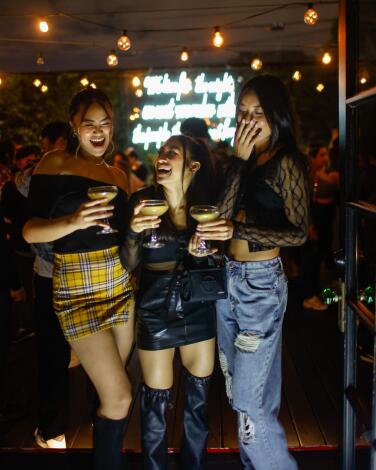
“A gentle pull on the correct doorknob will grant you passage into a world of incompatible wonders,” it reads, with the quote attributed to Henry Gaylord Wilshire, a land developer who gave Wilshire Boulevard its name.
For the record, I couldn’t find Wilshire actually saying this anywhere else. But the spirit behind the quote is real. A swanky cocktail bar with candles on the tables and leather couches makes you feel relaxed pretty much right away. If you want to dance the night away, you can do that too in a small outdoor patio where DJs are bumping hip-hop throughout much of the night.
The food and cocktails are tasty too — I had a plate of butter garlic fries and a glass of buttered apple sour. One pro tip: On your way out the bar, stop by the small window outside and get yourself a slice of thin Sicilian pizza for $3.
Catch a buzz on soju cocktails at Dan Sung Sa

Oh, and the drinks are fantastic as well. My favorite drink here is yogurt soju cocktail that comes in a big kettle for around $20 (I’m a lightweight, so sharing it with a friend was good enough to get both of us quite buzzed). There are regular soju and beer bottles as well.
When it comes to food, the menu is packed with tasty dishes (I counted about 100 in total), all priced quite reasonably. Try “dumbbells,” or seaweed-wrapped fried dough. You can also get a variety of skewers — the frog leg skewers are worth a try, although I prefer the pork belly. My favorite two items? The house lunch box (a rice with egg and kimchi dish that you have to literally shake to mix it all together) and lychee on ice, served in a big ramen pot.
Stay in the center of the hustle and bustle at the Line LA
